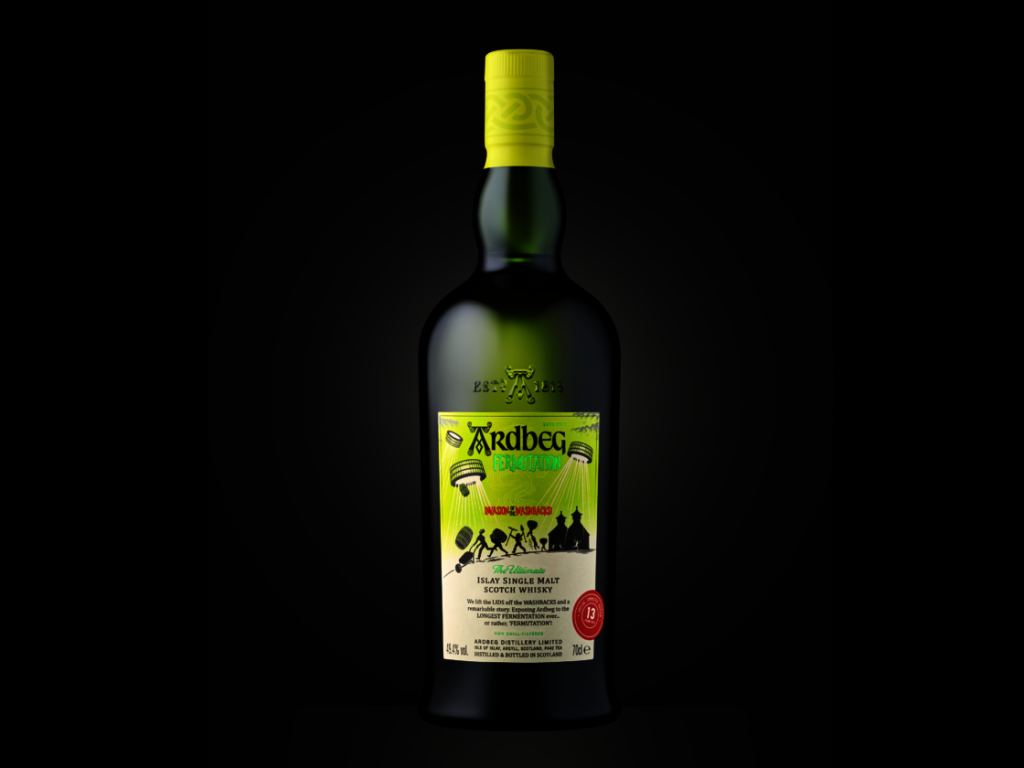The Chance Creation of Ardbeg Fermutation Scotch Whisky
In November 2007, a boiler breakdown birthed this unexpected limited release

Every so often a whisky comes along that’s been produced by a process that defies the typical time-tested, centuries-old craft. Such is the case with Islay darling Ardbeg‘s recently released 13-year-old limited edition expression, Fermutation—the pungent and funky result of an accident prior to distillation. It’s unlikely that scotch aficionados have tried anything quite like it, as its extended fermentation period is far from common. This 49.4% peated scotch is the vision of Dr Bill Lumsden, head of distilling and whisky creation at Ardbeg, who we spent time with for the opening of sister brand Glenmorangie’s experimental lighthouse last year. Lumsden’s creativity knows no bounds—a statement underscored by consistently collectible releases like last year’s Ardbeg Traigh Bhan. But the zingy Fermutation owes much to chance, as well.

David Blackmore, Ardbeg’s Global Ambassador and the first person outside of Lumsden to run a project on the lighthouse ever, walked us through the happenstance. “I’ve had the privilege of working as a satellite to Dr Bill Lumsden’s whisky creation team for 15 or so years now,” Blackmore says. “For years, we had this idea of doing a super-long fermentation at either distillery, but really at Ardbeg because it’s already so funky. The idea got put to the back of a very long list. Not for any particular reason, but partly because doing a long fermentation requires you to shut down the normal operation of the distillery.”
In November 2007, however, the boiler that powered distillation gave out. “It was running right up to the industry’s close season for the holidays,” Blackmore explains. “The weather wasn’t so great. Our then newish distillery manager had to make a call that nobody new wants to make to their boss: he called Bill and told him the boiler was down and the distillery wouldn’t be functional for two to three weeks. Bill’s response was, ‘Let’s go straight to the project I’ve always had in the back of my mind.'”

“We threw open the lids,” Blackmore continues. “We had all six washbacks full [where the first stage of alcohol is produced]. Fermentation was happening. After that point, you have to distill. If you can’t find a way to get the boiler on to heat the stills, the alternative is to dispose of it somehow or leave it and see what happens. We left it. It ended up being there for a little over two and a half weeks.” Typical fermentation takes place over 72 hours. Any longer, the liquid could have formed strange or dangerous chemicals. Instead, because it was the coldest time of year, things came together. “We never envisioned it being this long of a fermentation,” Blackmore adds. “It was always going to be longer, but then this fortuitous screw-up happened.”
“We just went with it,” Blackmore continues. The liquid was then aged in ex-bourbon casks, both first fill and refill. Blackmore ultimately didn’t taste it until it went into bottles, 13 years later. He was pleasantly surprised. “I was confused when I first nosed it. It was nothing like what I had imagined. It was much softer, but there’s something here that reminds me of some of the historic Ardbegs I’ve tasted, real characterful Ardbegs with funky accents.”

For us, on the nose comes notes of overripe pineapple with various citrus scents and a touch of green apple skin. On the palate, a dry but vibrant texture accompanies a burst of lemon-lime and tobacco, all of which decimated expectation. An underlying smokiness continues through the very long finish.
“We love what we do,” Blackmore adds. “Everyone at the company loves the whiskies we make.” This fervor extends to the Ardbeg community, called The Ardbeg Committee. In fact, Fermutation is a Committee-only bottling, meaning that it’s only available to those who register online.
Hero image courtesy of St Mary’s Cottage












